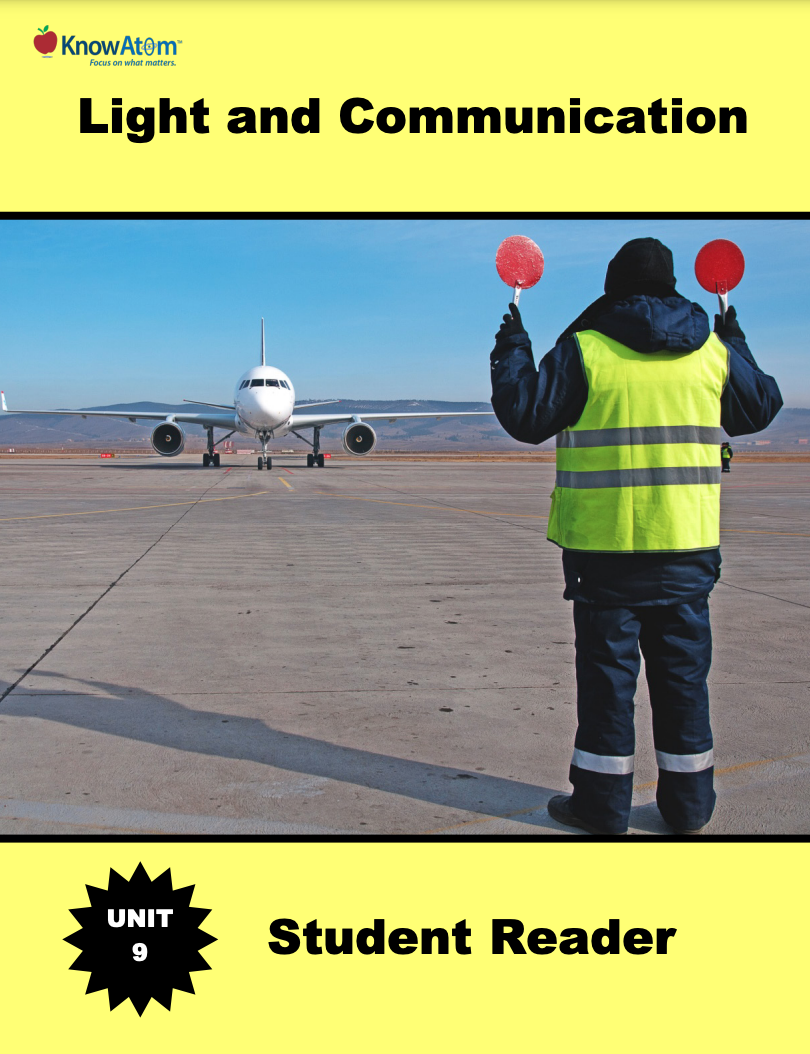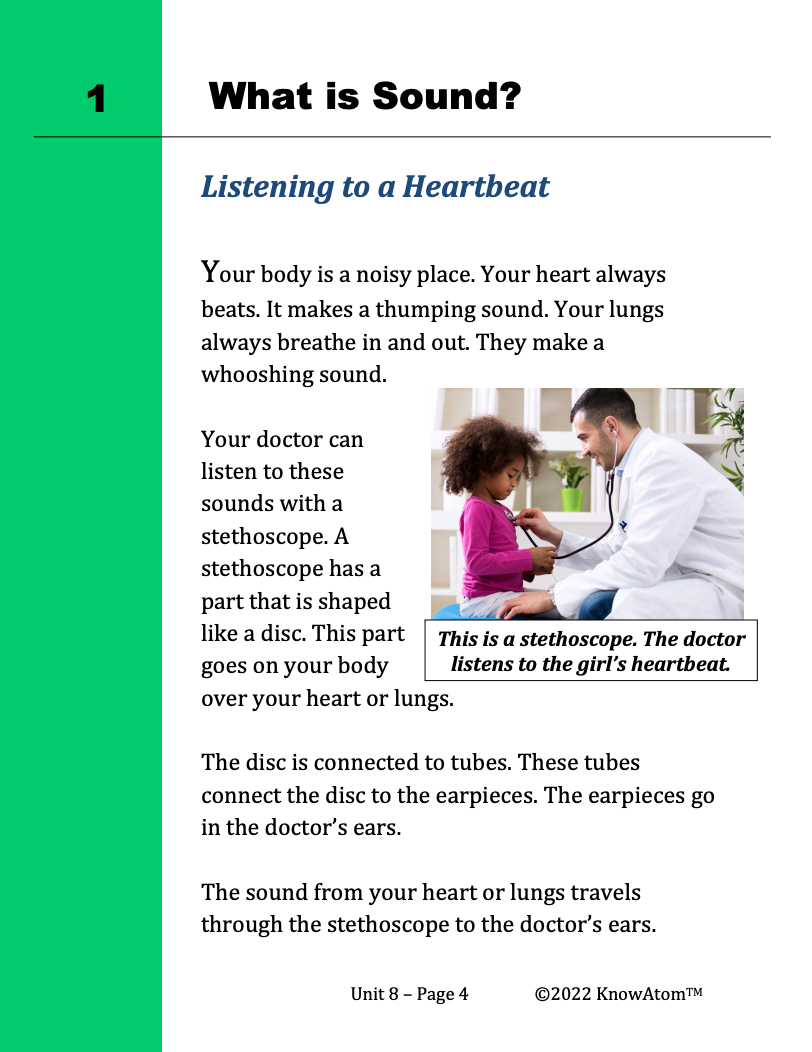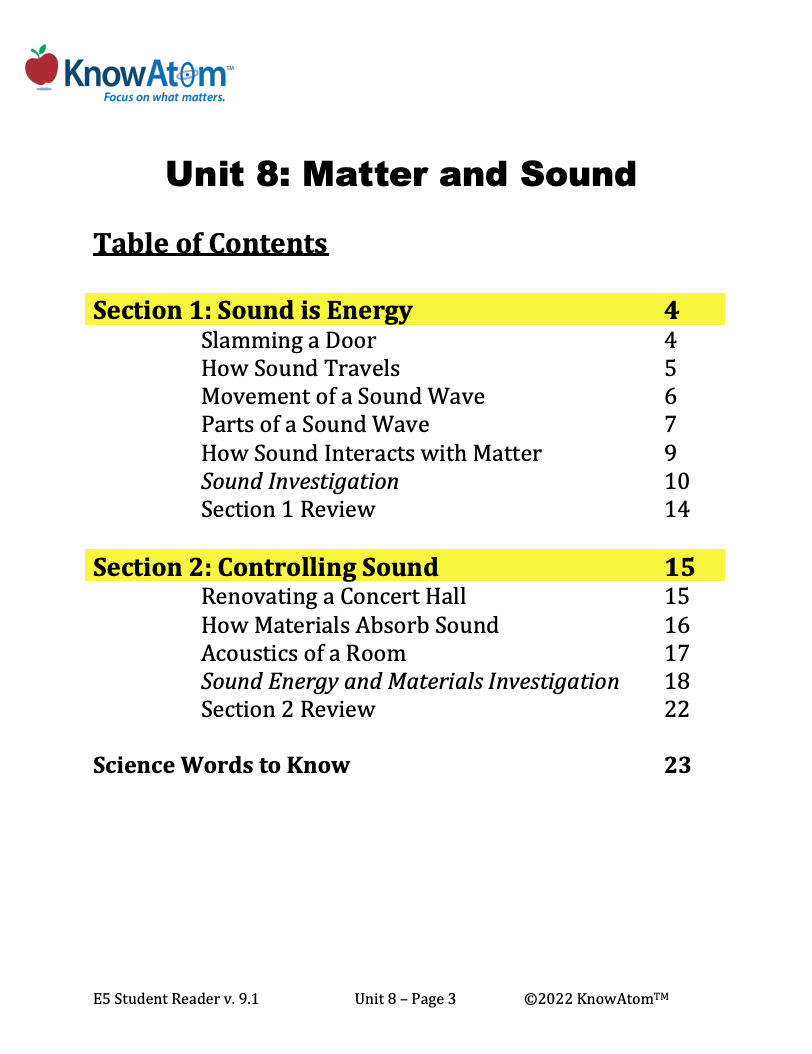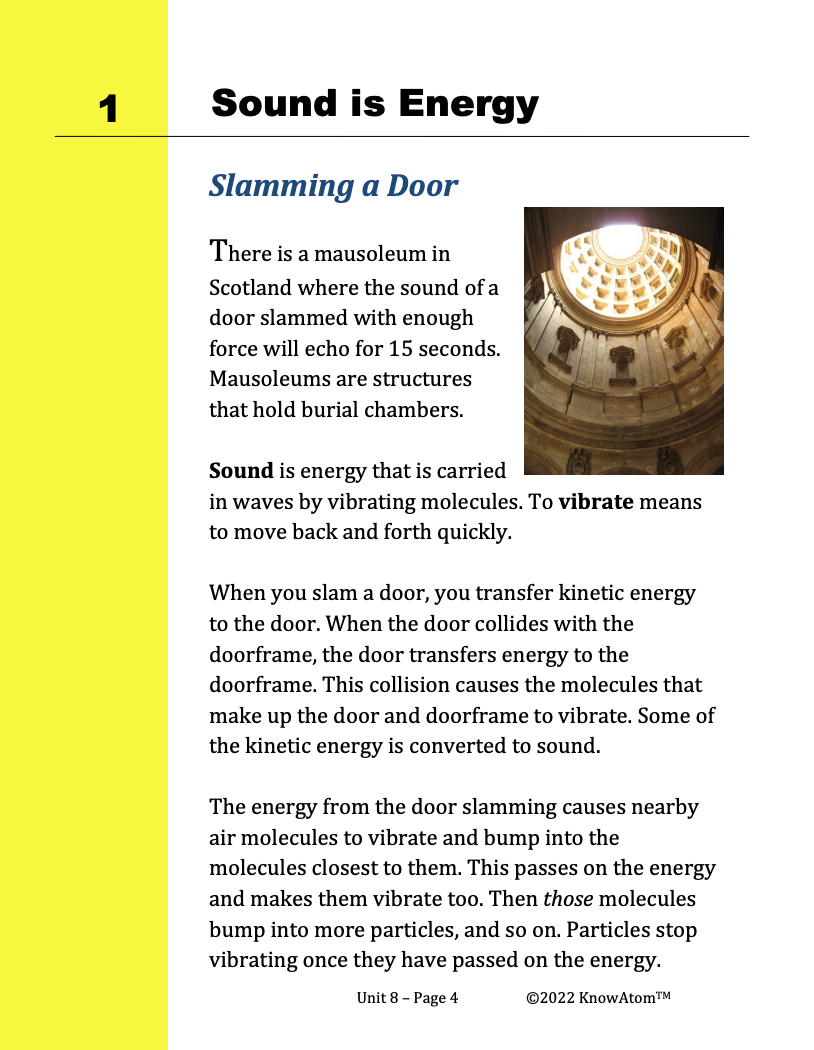
In this unit, students build on what they know about the science phenomena of energy transfer to focus on information transfer and how different technologies use patterns of sound, light, or numbers to transmit information. This page showcases key components of this lesson.

In this unit, students focus on the science phenomena of sound and hearing. Students begin with this lesson that has them exploring how sound causes matter to vibrate and how it moves differently through solids and liquids. This page highlights each component of this lesson.

In this unit, students analyze the science phenomenon of how sound is a form of energy that travels through vibrating molecules. They test whether sound travels through both liquid and solid mediums and observe how sound makes sand particles vibrate. In this lesson, students apply their scientific knowledge of sound to an engineering challenge.

In this unit, students build on their exploration of how energy and matter interact with a focus on science phenomena related to sound. In this lesson, students investigate how some materials absorb sound while others reflect it. This page is a high-level extract of this lesson.

In this unit, students focus on how sound energy is transferred from one place to another in waves. In this engineering lesson, students apply what they have learned about sound energy to design a sound absorbing wall. This page highlights each component of this lesson.
Standards citation: NGSS Lead States. 2013. Next Generation Science Standards: For States, By States. Washington, DC: The National Academies Press. Neither WestEd nor the lead states and partners that developed the Next Generation Science Standards were involved in the production of this product, and do not endorse it.
